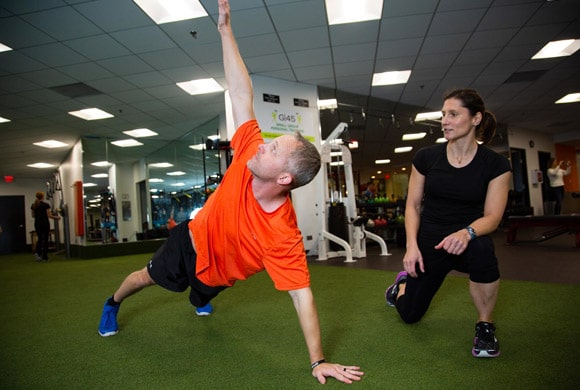Golf Conditioning

The athletic world has fully embraced the positive effects of sports specific conditioning for performance enhancement and injury prevention. However most exercisers do not know what type of training will help their golf game and reduce their chances of injury. Worse yet, many golfers may actually hinder their performance and predispose themselves to injury by training incorrectly.
Training for a sport must include exercises that improve “movement quality” specific to that sport. Movement quality for golfers is largely dependent on the mobility of three regions of the body – the ankles, hips, and the thoracic region of the upper back. Golfers will generate more powerful movement and torque provided that these three areas have adequate mobility and that the muscles affecting them can generate force within a full range of motion. In addition to improving force generation capacity, adequate mobility in these three areas can also help prevent injury or aggravation of other parts of the body.
While almost all joints in the body can move rotationally, the knees and low back are not designed to rotate very much. If a golfer does not have good rotational range at the ankles, hips and upper back, he may likely force too much rotation at the knees and low back and thus be susceptible to overuse injuries in those areas. Even the neck, shoulders and elbows are more vulnerable to strain while golfing if the ankles, hips and upper back are too tight.
To optimally enhance movement quality for golf, training must also be “proprioceptively” consistent with golf. Proprioceptors are the nerves that give information and direction for all movement. They are like wires and sensors that are part of the body’s computer. Some proprioceptors detect changes in speed of motion, some “turn on” only at the very end range of a motion, and others only respond to “load” or tension in a muscle or tendon. Many exercises do not provide the right types of stimulus to these “golf” proprioceptors. For example, working exclusively on machines, or only at slow/controlled speeds, or in limited ranges of motion, or isolating body parts instead of training the body as one integrated force-producing unit, or not exercising in the 3 planes of motion in which the body moves (particularly the transverse or rotational plane).
To lower your scores, reduce pain, and get greater enjoyment from the game that you love, make sure your training is designed to improve your movement quality and to enhance your mobility and power generation capacity.
